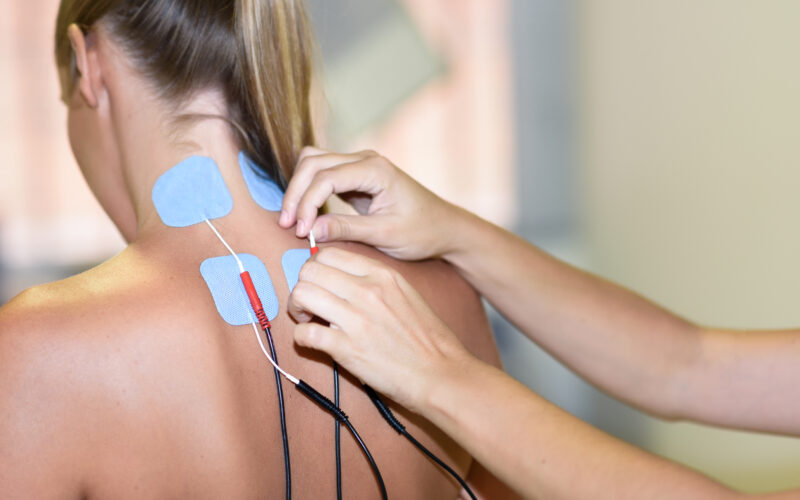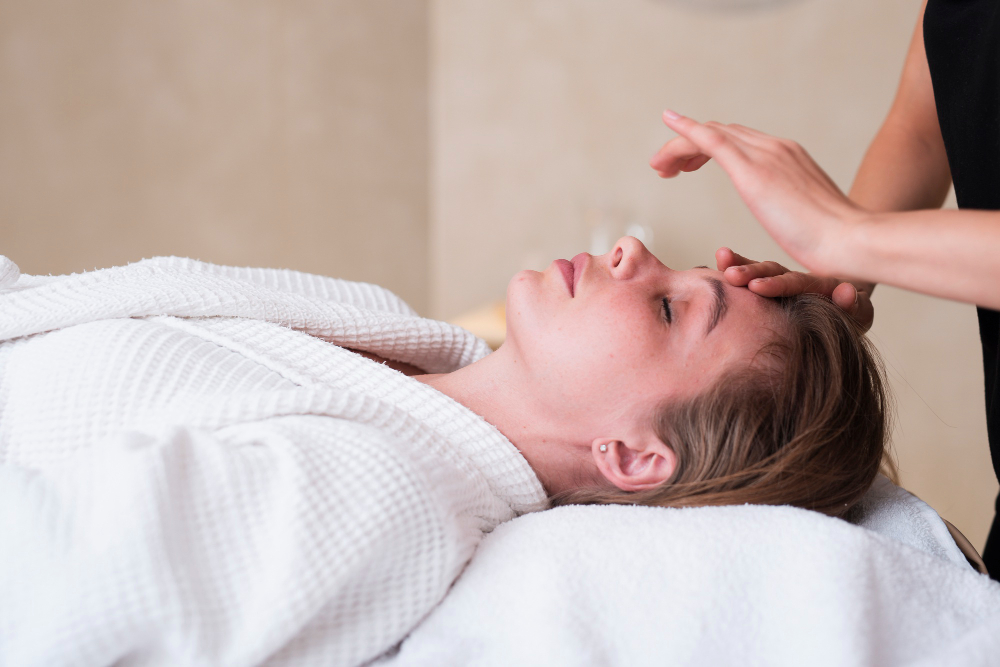Biofeedback therapy is a complementary and alternative (CAM) therapy, and it’s one of the techniques attracting the attention of researchers.
The foundation of this alternative practice was first sparked by experimental psychologist Neal Miller in 1961. UCLA researcher Dr. Barry Sterman expanded upon this research in the 1970s, eventually leading to what we know today as biofeedback therapy.
Roughly 38% of adults and 12% of children use some form of complementary and alternative therapy as part of their healthcare and general wellness routines, and biofeedback therapy is a big part of the complementary and alternative wellness movement!
What is Biofeedback?
Biofeedback therapy involves attaching electrical sensors to the body. The sensors might monitor brain waves, skin temperature, muscle tension, breathing, and heart rate. Biofeedback sensors don’t hurt the patient, and patients won’t feel the electricity they emit. The electric feedback helps you make small changes in your body that lead to great results, like relaxing certain muscles.
You are essentially learning to practice new ways to control and support your body on a subtle and non-invasive level. Anxiety, chronic pain, high blood pressure, and irritable bowel syndrome are just a few conditions that can find support through biofeedback training.
Medical centers, hospitals, and physical therapy facilities administer biofeedback therapy regularly, making this not only a CAM therapy but a widely accepted CAM therapy in conventional medicine. It can also be done at home with the right equipment and a provider to walk you through the process.
Biofeedback therapy is also sometimes referred to as biofeedback training. The Mayo Clinic considers biofeedback to be generally safe, but it might not be the right CAM therapy for everyone. Though there are no reported side effects or complications of biofeedback, as it’s a non-invasive treatment, it can impact those with other conditions. People with heart rhythm concerns and certain skin conditions might not be candidates for this treatment.
Types of Biofeedback
There are a few different kinds of biofeedback therapy, each with a specific purpose. The three most common methods of biofeedback training are:
- Thermal or temperature biofeedback: measures changes in body temperature over time
- Electromyography (EMG): measures changes in muscle tension
- Electroencephalography: measures brain wave activity
Other kinds of biofeedback include galvanic skin response training, which measures your sweat levels over time; heart variability biofeedback to measure your heart rate and pulse; and respiratory biofeedback to monitor breathing rates and patterns.
Biofeedback Devices
There are several different kinds of biofeedback devices to conduct the therapy, and the one you choose depends on your circumstances and the goals of using biofeedback training.
The two main kinds of devices are:
- Interactive computer programs or mobile devices: According to the Mayo Clinic, these are biofeedback devices designed to measure physiological changes with sensors typically attached to the fingers or ear. The sensors are connected to a computer or mobile device for tracking.
- Wearable devices: Patients can also wear a sensor on the waist to monitor breathing and breathing patterns. You can also wear headbands like this, which are available to consumers without prescriptions and can easily be used at home. The headband biofeedback devices measure your brain activity while you meditate.
What Can Biofeedback Therapy Treat?
There are several different uses for biofeedback training. Some of the commonly treated ailments or disorders are:
- Anxiety: Research shows biofeedback for anxiety support is promising. One study suggests that heart rate variability (HRV) biofeedback could reduce self-reported stress and anxiety. Neurofeedback, another kind of biofeedback, can improve symptoms of PTSD and generalized anxiety disorder, according to one 2017 research review.
- ADHD: When complementary and alternative therapy helps one mental health condition, it usually helps several others. Biofeedback training can support patients with attention-deficit/hyperactivity disorder (ADHD). Some research says neurofeedback might help the patient concentrate better and be less impulsive, but it’s a mixed bag of results for now, and further research is needed.
- Autism: Every person with Autism Spectrum Disorder (ASD) is different. Some patients have mild symptoms associated with ASD, and others need significant care to manage their wide range of symptoms. Biofeedback therapy for autism support might help people with ASD manage several symptoms, like emotional distress.
- Headaches: Headaches are one of the best-studied use cases for biofeedback therapy. Around 96% of people experience a headache at least once. The American Migraine Foundation says biofeedback and relaxation training typically yield a 45% to 60% reduction in headache frequency and severity—equivalent to the relief felt by common migraine medications!
Find a Provider for Biofeedback Training
Complementary and alternative therapies aren’t as widely-studied as conventional medicine, like chemotherapy, prescription medications, or surgery. Finding healthcare providers who understand how to utilize integrative techniques like biofeedback therapy can be challenging. Some providers may have never even heard of the practice!
Due to the nature of the treatment, biofeedback practitioners typically have licensure in other healthcare disciplines, like psychology or physical therapy. So, it may be possible to have the treatment covered under insurance.
Heally can help connect you to a knowledgeable practitioner. We focus exclusively on complementary and alternative therapies like biofeedback, and services like breathwork—the perfect addition to biofeedback therapy, according to healthcare experts.



